#best tea in Sri Lanka
Explore tagged Tumblr posts
Text
Wholesale Green Teas Free Leaf Green Tea Bulk
In 2019 the export worth changed to $4.70 per kilo, by -4.664%. Since American shoppers are usually less educated about tea due to a lack of a robust tea tradition , there’s a tendency to skew toward manufacturers with pretty, eye-catching packaging. Of course, high-quality bagged teas are available; you simply have to know the place to look. Green tea accommodates a fair amount of catechin which inhibits the growth of Streptococcus mutans. This helps in reducing the risk of oral infection, thereby paving the way for higher oral care and therapy. Oh, there are a number of pieces of analysis that additionally counsel that consuming green tea is a good way to sort out bad breath. Like all types of tea, green tea is obtainable in all kinds of costs. You can decide up cheap bagged choices in your local grocery retailer or find extremely pricey loose-leaf varieties on-line or at tea outlets. Generally, you get what you pay for as far as quality, however luckily there are good choices in every value range. A listing of the most effective green teas wouldn’t be complete without at least one matcha choice.
youtube
It has tightly rolled leaves that unfurl as you brew, and the flavor is vegetal, barely smoky and bolder than many other green teas. You can brew these teas in a pot, but we’d suggest using a standard gaiwan if you have it, to extract probably the most flavor from your leaves. Popular Japanese teas are sencha, gyokuro, and genmaicha. It’s a lovely tea to welcome spring or brighten up a winter’s day. Gyokuro is a extra specialised tea because it is partially shaded through the rising stage.
Pineapple Papaya Green Tealoose Leaf
As an added bonus, the brand's bins are produced from recycled supplies. If you’re on the lookout for a refreshing, delicate cup of tea that balances candy and nutty notes, look no further than The Republic of Tea’s People’s Honey Ginseng Green Tea. The tea leaves are sourced from China, where green tea originated, and blended with a few tasty elements like Panax ginseng, linden flowers, and honey for a signature flavor.

Well recognized for its antioxidant content, green tea has grown increasingly well-liked. There are a variety of green tea products in the marketplace, including normal tea bags, matcha powders, cold brews, and loose leaf teas with a spread of taste profiles. For cold-brewed iced tea, Teng recommends a ratio of 6 grams of unfastened leaf tea for each 25 ounces of water, or roughly 15 grams of tea for an 8-cup pitcher. All you have to do is go away the pitcher in the fridge for 36 to 48 hours for scrumptious iced green tea. Any longer than three days and the microorganisms in the tea could pose a well being danger. For hot-brewed iced tea, begin by heating four cups of water to your desired temperature. Jasmine and Sencha green teas are a number of the hottest, yielding balanced vegetal and sweet flavors with a smooth finish. Choose matcha if you are in search of a daring flavor with a higher caffeine and antioxidant content. The lemon and ginger notes in Kusmi Green Tea yield a complex flavor, elevating the pure taste of the green tea. Sunshine is French-made tea, sourced from tea leaves from all over the world, offering a wide range of thoughtfully crafted flavors. Try the Ginger Lemon Green Tea after mealtime to get the potential digestive benefits of ginger and the palate-cleansing style of lemon.
How Do You Make Green Tea?
Even if you’re new to matcha, you’ll benefit from the mellow, subtly candy flavor of Encha. Loose-leaf tea tends to yield a more complicated flavor, because the water can flow through more of the leaf's floor, infusing at a higher concentration. Climate-neutral and Fair Trade, Vahdam Himalayan Green Tea Leaves are sourced from the Himalayan area of India and have a candy and vegetal taste profile. Measure a 3 gram portion of the loose-leaf tea into a tea infuser and brew with 175 Fahrenheit water for three to 4 minutes, and pressure into a cup. Prior to 2019, a kg of green tea was going for US$5.48 in 2017 and US$4.ninety three in 2018.
These naturally occurring flavonoid antioxidants can cut back oxidative cellular damage in the body by blocking inflammatory pathways.
Tea leaves, when saved of their entire form, lure essential oils, amino acids, catechins and flavonoids.
Verywell Fit uses only high-quality sources, including peer-reviewed studies, to assist the facts within our articles.
Rishi recommends brewing one sachet per eight ounces of water at a hundred and sixty levels Fahrenheit for two minutes.
I was told it was happy hour but once I ordered a cappuccino she only have me one.
However, sipping on green tea can be a half of a balanced diet, notably if it is offsetting consumption of sugar sweetened beverages. According to the FDA, as much as 400 milligrams of caffeine a day is considered safe for healthy adults. This is equal to about eight cups per day of green tea or four cups a day of espresso. You may need high quality and ethical issues when it comes to buying your green tea. If this is the case, look for licensed natural merchandise to ensure no synthetic fertilizers had been used to grow the tea leaves. Matcha also typically has a higher caffeine content material than other green teas.
Espresso Frappucino
The tea bags are bought in 40-count bins, and there is a K-Cup version out there for those who need their tea quick. Sencha is a Japanese green tea that's simple to determine by its long, thin leaves and easy to drink throughout the day due to its moderate caffeine content material. It can include a variety of flavors but sometimes leans toward the grassier, vegetal aspect. Rishi Tea's sencha strikes a great stability with a predominantly hearty style that is underlined by a lightweight sweetness.
#best tea in Sri Lanka#Best tea factories#tea factory in Sri Lanka#sri lankan tea brands#sri lankan tea industry#best green tea in sri lanka#tea leaf tea#tea manufacturers
1 note
·
View note
Text
#bandarawelahotels#travel#Bandarawela Hotel colonial architecture#Luxury hotel in Bandarawela Sri Lanka#Best hill country hotel Sri Lanka#Colonial-style hotel in Sri Lanka#Scenic mountain hotel Bandarawela#Tea plantation hotel Sri Lanka#Top Bandarawela hotel stay#Best hotels near Ella Sri Lanka#Bandarawela hotel with garden views#Luxury rooms at Bandarawela Hotel#Best restaurant in Bandarawela Hotel#Historic hotel Sri Lanka stay#Colonial-era hotel Sri Lanka#Romantic getaway in Bandarawela#Family-friendly hotel in Sri Lanka#Hotels near Rawana Falls Sri Lanka#Scenic hill country accommodation#Sri Lanka heritage hotel stay#Tea country resort Sri Lanka#Relaxing hotel in Bandarawela
0 notes
Text
Top 5 Reasons to Visit Sri Lanka in 2024!

Sri Lanka, a gem in the Indian Ocean, beckons travelers with its diverse landscapes, rich history, and warm hospitality. As 2024 unfolds, there's no better time to explore this enchanting island. Whether you're drawn to vibrant city life, wildlife adventures, serene hill country, tea plantations, or cultural marvels, Sri Lanka offers an array of experiences that will leave you captivated.
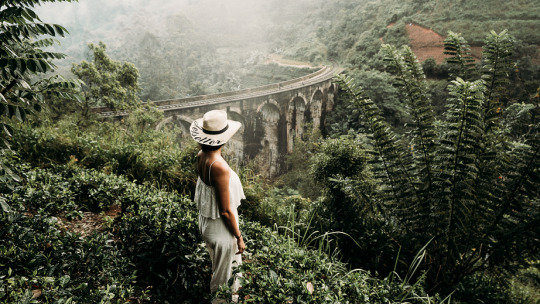
1. City Life: Colombo
Embrace the vibrant city life in Colombo, where ancient traditions meet modern elegance. The Gangaramaya temple, a beacon of serenity, houses life-sized Buddha idols and a mesmerizing white jade Buddha. Cross the street to Beira Lake and discover the Seemamalakaya, an architectural marvel by Geoffrey Bawa. Colombo's blend of history and contemporary charm makes it a must-visit.
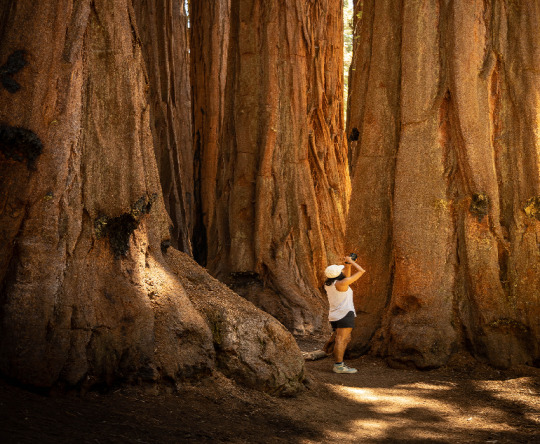
2. Wildlife: National Parks
Discover the incredible biodiversity of Sri Lanka by exploring its 14 national parks. Take a safari game drive in renowned parks like Yala and Minneriya, where elephants, leopards, and a myriad of other wildlife await. For an immersive experience, book a safari through reputable lodges like the Wildlife Tented Lodge, which offers luxury accommodations and guided wildlife encounters..

3. Hill Country: Ella
Ella, nestled amidst waterfalls and iconic landscapes, invites you to hike up Little Adam's Peak for a breathtaking sunrise. Capture the perfect photo at Art Cafe Umbrella and relish your stay at Secret Ella or indulge in luxury at 98 Acres Resort, which offers picturesque views of Little Adam's Peak.
4. Tea Plantations: Nuwara Eliya
Take a scenic train ride from Ella to Nuwara Eliya, where misty scenes and tea plantations create a magical setting. Engage in tea-tasting tours, explore Horton Plains National Park, and unwind at Oliphant Bungalow. Nuwara Eliya's cooler weather and scenic beauty make it a haven for tea enthusiasts.
5. Cultural & Historical Value
Discover the cultural treasures of Kandy, your gateway to UNESCO sites like Sigiriya and the Dambulla Caves. Stay at the eco-friendly Aarunya Nature Resort, savoring the beauty of tea plantations. Explore Sigiriya's "Lion's Rock" for panoramic views and delve into the ancient wonders of Dambulla Caves, a well-preserved temple complex.
Summarizing Reflections As Sri Lanka emerges from its past, it welcomes travelers with open arms. Meet friendly locals, savor delectable cuisine, and marvel at the pristine beauty of this island nation. Don't wait – book your ticket, plan your journey, and get ready to capture the essence of Sri Lanka in 2024. For more travel inspiration and tips, visit TheEagerTraveler.com. Embark on a journey that promises memories of a lifetime.
#adventure travel blogs#backpacking guide for beginners#world travel guide#destination guide santa maria valley#best travel blogs#europe travel blog#female travel bloggers#destination guide carmel#top 5 Reasons to Visit Sri Lanka in 2024#City Life Colombo#Wildlife National Parks#Tea Plantations Nuwara Eliya#Cultural & Historical Value
1 note
·
View note
Text

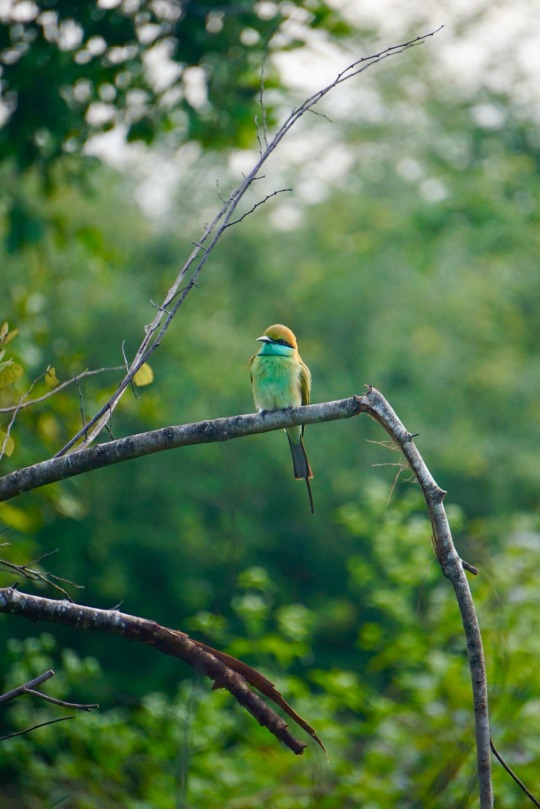
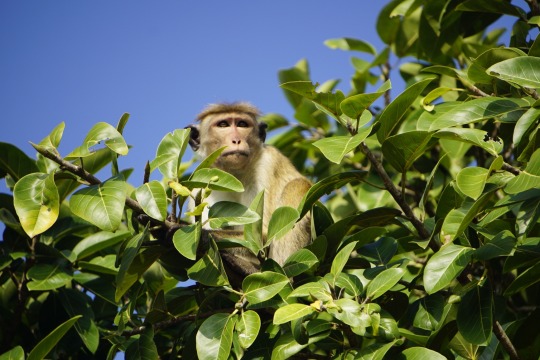


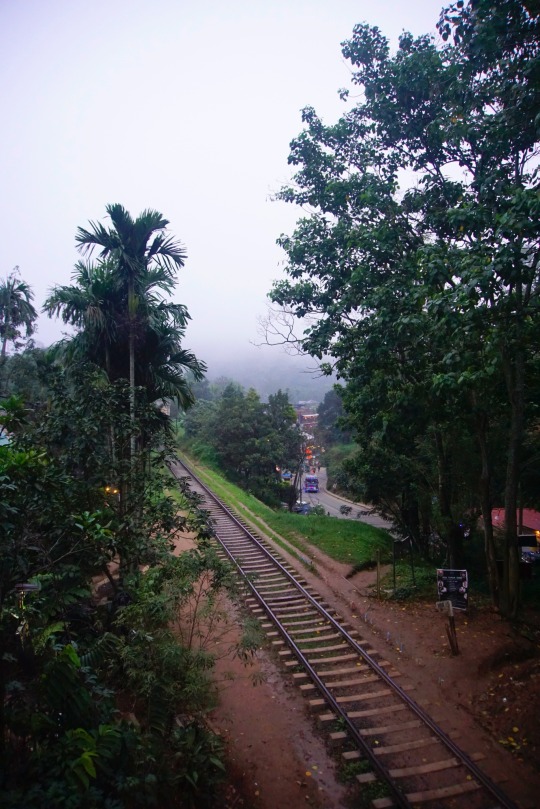
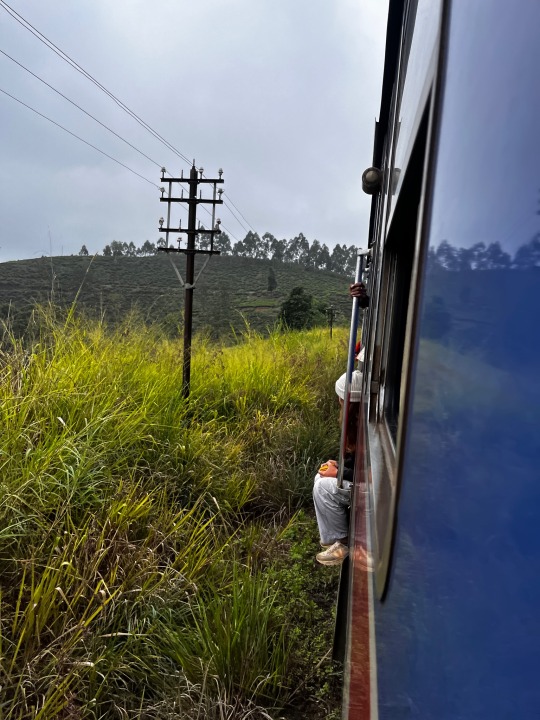

Sri Lanka part 2!
So despite getting sick on arrival, having a fucked up back and my period that never comes coming halfway through I managed to have the BEST TIME!
We moved in our solo traveller coalition from the southern beaches to Udawalawe National Park, where we met so many elephants and other animals. We got a lift in our safari jeep to the mountain town of Ella (and got stung by bees on the way there due to the very fast, windowless jeep driving through a SWARM of them)
Ella was a lot cooler as it was up in the cloud forests and there was a ton of tea plantations around which we visited, and got to pick a few tea leaves. From Ella, we got the very slow train to the city of Kandy through the hills which was magical. It was very, very long but just amazing. Food vendors got on at every stop, saying whatever they had in their baskets in a sing song voice as they moved through the packed train. At Kandy, we stayed for one night and visited the Temple of the Buddha’s Tooth for the evening ceremony and had such a curry and samosa feast afterwards ❣️ Then I said goodbye to my lovely group and made my way back to Colombo on the train. I left on a 2:45am flight via Dubai and now I am back home.
What a trip!!! I had no expectations and I was so wonderfully surprised. If you’re ever considering going one day do it!! I’m fuming to be back home.
20 notes
·
View notes
Text
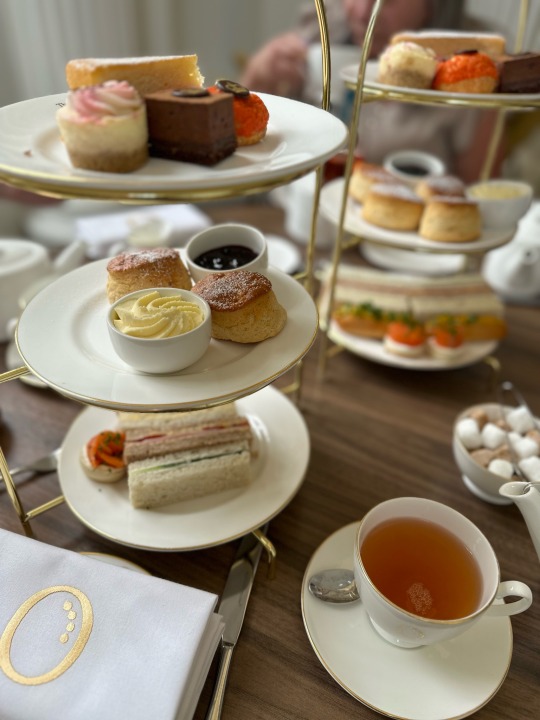
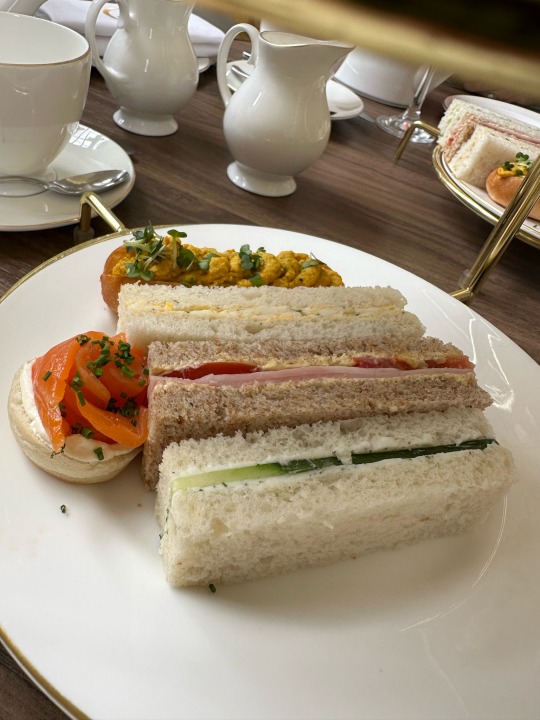
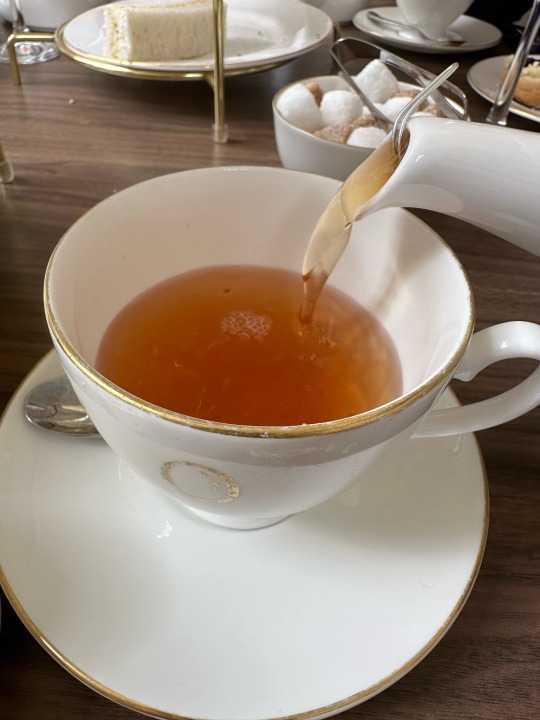
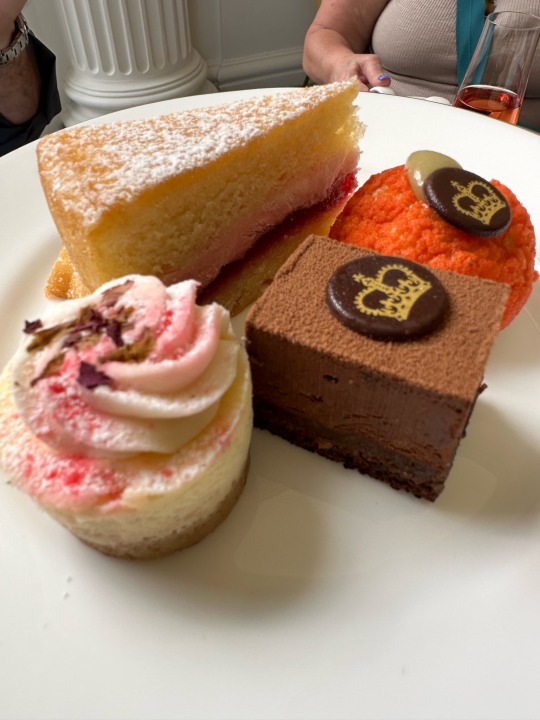
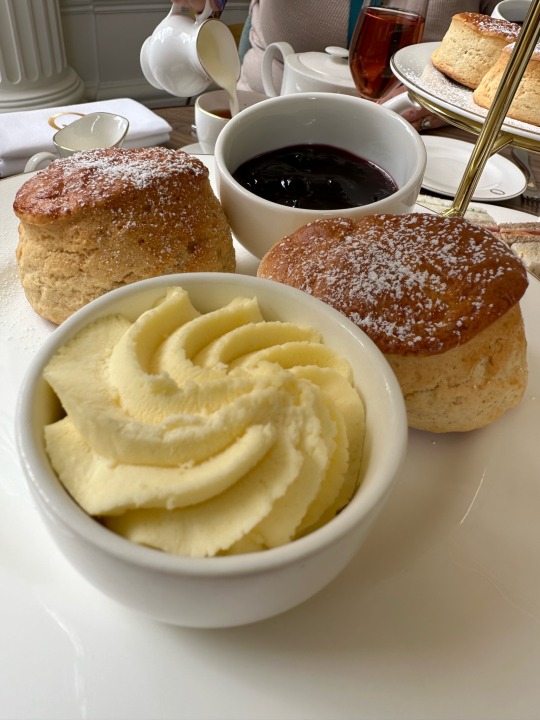
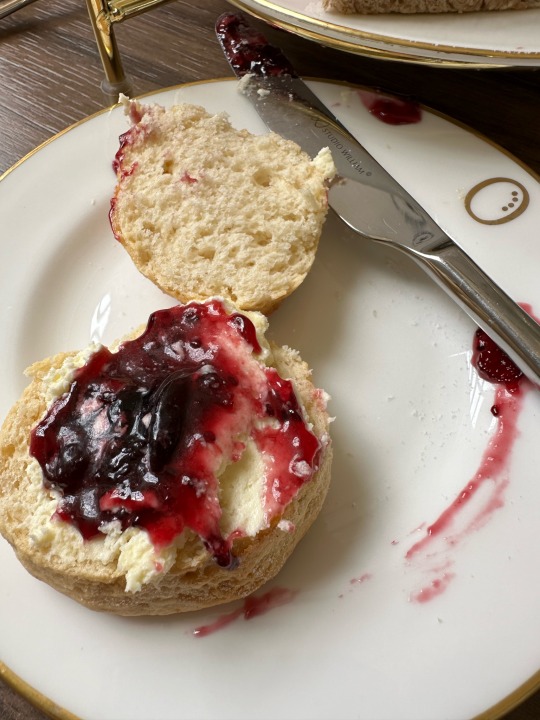



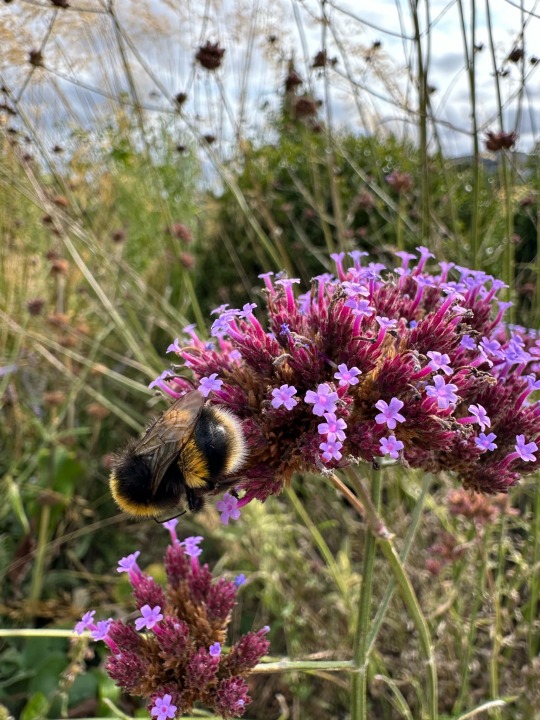
One of the planned highlights I have for this trip is high tea!
I was hoping for a somewhat social experience so this is one of the few tours I book on this trip.
Annoyingly it doesn’t go great.
The time I booked didn’t have anyone else signed up, so the company offered to move me to an earlier or later time (my choice). While I appreciate the accommodation, what they failed to mention (or maybe didn’t know), is that the only folks on the new time are two very elderly ladies, who can’t really do much walking.
And it’s intended to be a 1hr walk of the gardens, followed by high tea. This is deeply sad since the attached walk was a major reason why I chose this tour. :(
So instead we get a sort of glance at the gardens, with the poor tour guide doing his best to compensate, while we have a very slow walk.
The tea itself was at least very good!
I’m not sure if it was the best tea in town, (there are more than a few options, some of them very unique) but it seemed like a nicely typical one, and was one I could find attached to a tour and that didn’t look to garlic heavy.
We have tea in the Orangery at Kensington Palace, a type of building which normally houses orange trees. But in this case was called such just because its bricks are orange.
High tea comes with multiple tiers (on one of the tea tiers).
The top tier is sweets: “Chocolate orange croustillant Strawberry and rose mini cheesecake Raspberry Victoria sponge Orange choux”
I didn’t have much of the chocolate ones, but the little nibbles I had were very good
The middle is scones with cream and jam: “Traditional scones Cornish clotted cream, blackcurrant preserves (alternative fruit preserves available)”
This tier ended up being my favorite, which I would not have guessed!.
and the bottom is the savory sandwiches. “English cucumber, dill finger sandwich Free range egg mayonnaise, salad cress finger sandwich Cured chalk stream trout, cream cheese, chives bagel Coronation chicken bridge roll Gammon ham, vine tomato, wholegrain mustard finger sandwich”
You also get a tea of your choice: “ORGANIC CHAQUOING GREEN A mellow, classic green tea from Sri Lanka which is known for some of the best green teas in the world.”
I noticed while researching that many places had gluten free, vegan, and/or vegetarian options as well.
According to the guide, tea started as more of a working class thing and got more posh over time. Nowadays high tea like this is a special occasion. But many folks have a smaller afternoon tea version, as their schedule allows.
And tea bags? an accident! Apparently a tea merchant would store his orders out in small lightweight bags with a string and label attached, mainly for ease of storage/labeling. When he found out folks were submerging the bags in water to make tea he was shocked!
Did I get dressed up and wear my bee dress (from Salem) for this? 100% yes
Will I ever forgive my hair for being just awful on the occasion? No.
If I go for high tea again as a solo traveler, I think I’d either a) just go solo (you get your own set of tiers anyway- just go hungry!) and thus have a wider range of menus to choose from. Or b) maybe try and find another traveler to share the experience with (preferably one with some photography skills.)
Do check if you can make a solo booking before you go. Some places seem to be limited to parties of 2 or more.
I think the Orangery allowed solo bookings, and seems to be a fairly quintessential example of a traditional English high tea.
If you’re looking for something smaller, cream tea (tea with scones that comes with clotted cream and jam) is likely a great option!
7 notes
·
View notes
Text
Ok wholesome rant time.
I love board games. Not like, Monopoly or Scrabble, no no. Nerd board games. Board games with intricately designed pieces and rulebooks thick enough to scare away the average person. And Wingspan designed by Elizabeth Hargrave is the best one.
Now, I am an autistic floof who would prefer conflict be avoided, so if you want to make kids cry with your capitalist greed and brutalist strategy go play Ticket to Ride. This game is not that. It is a chill beautiful refined game to put your pinkies out and enjoy a cup of tea with your friends. Imagine sunny days with poofy pretty clouds happy carefree vibes.
The game centers around birbs. You are a birb enthusiast and if that doesn’t hold true in your real life it will soon. Your goal is simple: score the most points. There are a myriad of ways to do this but they all revolve around hosting a sanctuary to birbs of all habitats, diet, size, etc. You play birbs by paying food and eggs. You get these resources by taking a turn to obtain them in a specific habitat. The more birbs you have in that habitat the more of that resource you get and you get to use those birbs powers, which are themed after the real life birb. It’s an engine building game but these rules aren’t really why this is the best game ever.
This game excels at providing a warm fuzzy feeling in your heart. Your competitors cannot impede your progress as everyone has their own sanctuary/board. They can only help you (ie birbs that let everyone get a resource.) Everyone can flourish, and in fact the more players the higher the average score.
But the piece de le resistance is the theming. The birbs are FUCKING GORGEOUS. I don’t mean they only picked birbs that look pretty, I mean the art on these cards makes me calm and happy. And each card has a fun fact at the bottom about that bird or it’s history. The whole game oozes charm and really just encapsulates the feeling when you see an animal and go “oh he’s just a silly little guy.”
The base game is North American birbs so pretty standard but the expansions really leaned into silly guy territory. Or maybe I’m just not educated enough to recognize foreign birbs as normal. The base game is very well constructed and a great stepping stone into slipping into the rabbit hole of expansions.
Because of this game, I have a new hobby. Birbs. I have a favorite birb. I watch birbs out my window. I know random birb facts. I can identify most birbs into a general category. It’s wonderful.

Look at this guy. This is a European Robin. My man does not have any worries. He is living under a rock. He doesn’t even know what a tax is! His entire existence is just round boi. Oh to be a birb like him on a snowy rock.
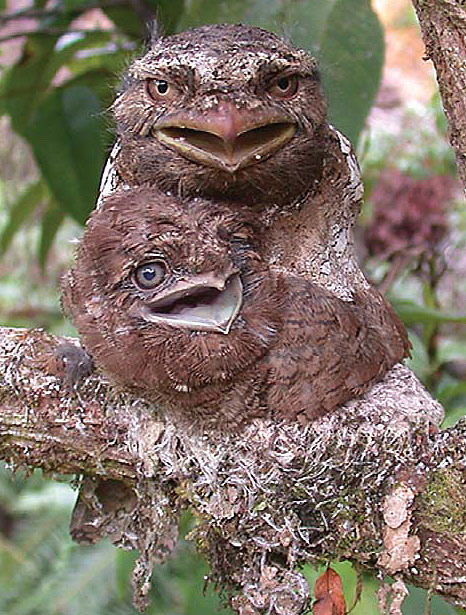
This guy, however. This is a Sri Lanka Frogmouth. He has committed at least 3 war crimes and he knows it and I love him anyways. He’s so ugly! I love him. He is also my favorite irl birb. So he gets 3 pictures.
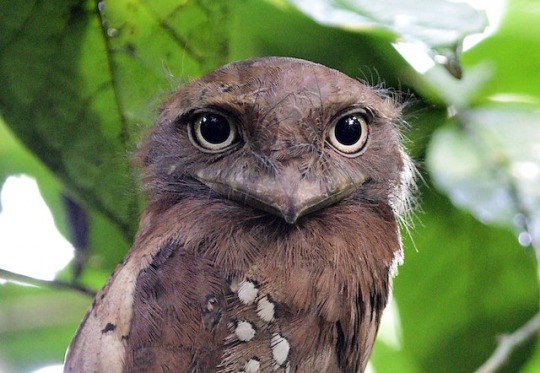


This guy, the American Woodcock, is in base game and he gives “mom i frew up” vibes. He looks guilty and uncertain and HIS NAME IS A WOODCOCK.
I met these birbs through this game and I’m a happier person for it.
TL;DR if you like board games and want a good relaxing time and maybe a new birb obsession Wingspan is the game.
Below: card art

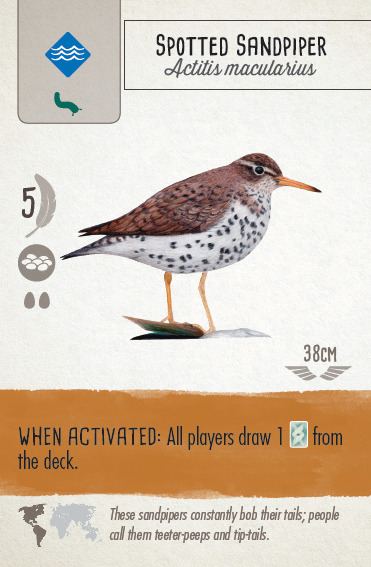
Also bonus the art is mostly male birbs for the foliage but they can lay eggs so this game is 95% trans birbs. Hell yeah.
#wingspan#best birbs#board games#personal rant#cute birbs#thoughts#late night thoughts#me irl#meirl#pm seymor#look at him#he’s so ugly#actually autistic#round boi
41 notes
·
View notes
Text
To this day, the best tea I’ve ever had was one of the first teas I ever tried. However, for many, many years (I started drinking hot tea in about 2009), I could not find it.
I have found it again. I hope. The company name and slogan are the same. The packaging is different, but hopefully they didn’t screw with perfection in the blend. The old packaging was prettier, but hey, I’ve kept an empty tin all these years, so if I can just get the tea itself, we can work with that.
If. Such a word. But I have looked sporadically for years and found nothing, so here’s hoping a small parcel does eventually make its way from Sri Lanka to my house.
If I am somehow being defrauded, I’ll be disappointed but probably all right - PayPal, etc. If Anyone tries to levy a tea tariff that I most certainly did not vote for, though, then we party like it’s 1776, only this time, no perfectly innocent tea will be dumped into any bodies of unboiled salt water. Perhaps two or three hundred pounds of oranges, but not the tea. Leave my leaves alone.
(Disclaimer: the end of this post is a joke. I will write angry letters if I feel my tea is unfairly taxed - since I was brought up in an area a few decades behind the times, I might even write a particularly vivid one to the Opinions page of my somehow-still-extant local newspaper - but I don’t have the horses, swords, powdered wigs, wooden dentures, or charisma, apparently, to inspire anyone else to revolt against the government, and I’m more of a law-abiding type myself. I might write a comedic story now with the premise that my attempts to secure the best tea in the world could somehow start a second American Revolution, but if I do, I’ll be primarily making fun only of the first one and people who died over two hundred years ago. Repeat, this is a joke, and whoever at the CIA that it is who monitors my web activity can relax, I am not a threat to the fragile-egoed - one might, if one was daft, even make comparisons to certain unique weather phenomena, like tiny pieces of frozen condensation - collective of middle-school-brained dunces* currently trying to pass for a government.
*The First Amendment is still, to the best of my knowledge, in effect. I’m right about that, right? That it is indeed in effect? I can still call government officials unintelligent, immature, humorless, and special snowflakes, at least for the moment, right?)
#tea things#u.s. politics#u.s. history#jokes#political humor#no idea how I turned this into a dramatically-over-extended political joke but here we are
3 notes
·
View notes
Text
From bush to mug: What do you know about tea? How the most popular drink in the world is created
Tea is drunk always and everywhere: at breakfast and before bed, in summer and winter, with sugar and lemon. But how much do we know about him? Why is black tea not black at all in a mug, but green tea has different shades from amber to gold? How is it grown and when is it harvested? And most importantly, how to drink and brew tea correctly? Together with Time Tea, we have compiled a tea guide and answered the main questions about the most popular drink in the world.
1. How tea is grown and harvested
White, green, black, oolong – despite the fact that there are many different teas in the world, they are all made from the same plant. It is called Camellia sinensis, or Chinese camellia. This is a small bush about a meter high, although closer to the south the plant becomes taller, stronger, branchier and more reminiscent of a tree. The first harvest is harvested five years after planting, but it is believed that the leaves gain maximum weight by the age of 50 (for this, the crop must be harvested regularly). Every year the bushes are pruned, and only the youngest, softest and juiciest leaves are selected for tea.


2. Where are tea leaves collected?
Tea grows in more than 30 countries. Although it was originally cultivated in China, the country still ranks first in terms of yield. It is followed by India and Sri Lanka – the British brought tea there in the 19th century, so these places are famous for their black varieties. Depending on where it is grown, the leaves differ in taste and color. Thus, African varieties have a reddish tint – all due to the fact that there is a lot of copper in the soil. Thanks to the ideal climate, the best varieties of tea grow in China, India, Sri Lanka and Kenya – they are used in TimeTea

3.What kind of tea is there?
In addition to the regions of growth, tea is divided according to the method of processing. There are six types in total – white, green, yellow, oolong, black and pu-erh. They differ mainly in the degree of fermentation. White is almost never fermented – the young buds just wither in the sun. Green is steamed, dried or fried. Black tea has the longest chain: dried leaves are rolled into plates, from which the juice is released. They are laid out on special trays, where the processes of oxidation, fermentation and fermentation take place – almost like wine production. It is at this point that the tea leaves turn dark in color.
4. How to tell if the tea is of high quality
The criteria differ depending on the variety, but there are several general principles. Examine the leaves – they should be approximately the same color and size. Make sure there are no twigs or dust in the package, and no foreign odors. When you have brewed the tea leaves, look at the water – it should be clear, even if it is strong pu-erh. The aroma of the drink should be light and the taste rich. If your green tea turns out bitter, it may be not only the poor quality of the leaves, but also the wrong water temperature or the wrong number of leaves.
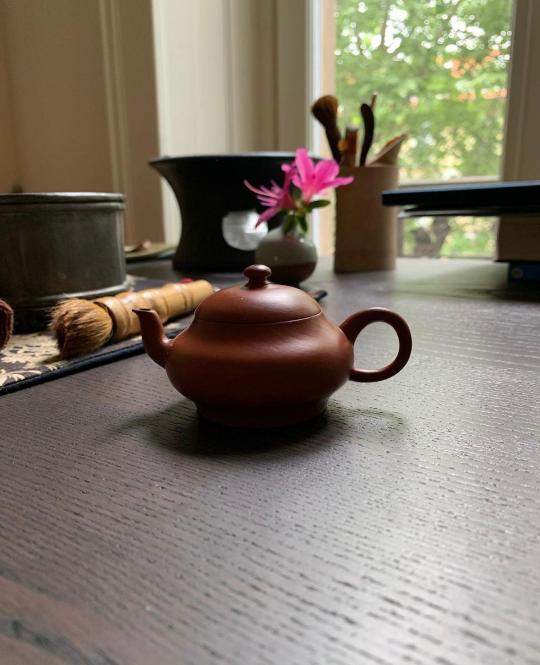
5. How to brew the perfect cup of tea
The first thing you need is fresh, high-quality tea. The second is soft water. It should not contain minerals, salt or chlorine – use a filter or bottled water. For one cup you will need a teaspoon of tea. Remember that water should not boil for a long time: the taste of the drink depends on the oxygen content, which decreases with long boiling. The brewing time depends on the variety: black tea needs at least five minutes, while white tea needs less than a minute. After this, the tea leaves must be removed from the teapot or cup.
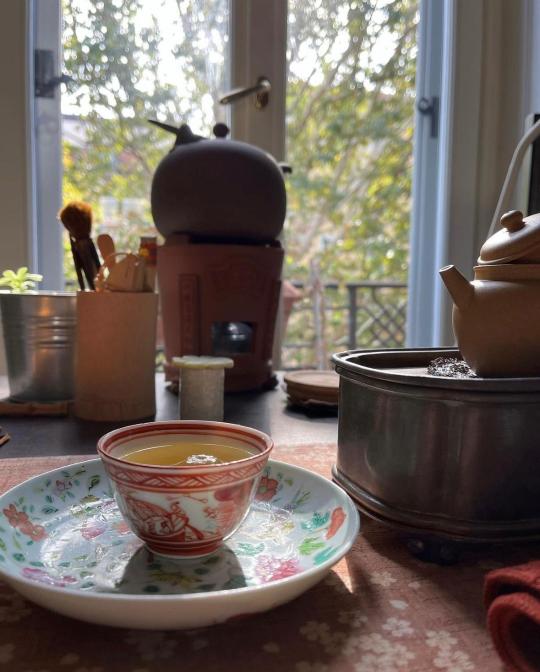
Discover the exquisite world of tea with Time Tea. Our selection of high-quality teas, including black, green, oolong, and more, is sourced from the finest regions worldwide. Whether you’re a connoisseur or just starting your tea journey, our premium teas promise an exceptional experience in every cup.
#tea#food#canada#drink#oolong#green tea#herbal tea#matcha#black tea#tea time#world cup#tea cup#tea pot#cup of tea#roses#happy spring
8 notes
·
View notes
Text
Discover the Best Tennis Holidays in Asia: Explore China, India, and Sri Lanka

Asia, with its diverse cultures, stunning landscapes, and rapidly developing sports facilities, has become a prime destination for tennis enthusiasts looking for unique holiday experiences. China, India, and Sri Lanka, in particular, offer a blend of top-notch tennis facilities, luxurious accommodations, and rich cultural experiences that make them ideal for a tennis holiday. Let’s explore what each of these countries has to offer.
China: A Blend of Tradition and Modernity
Tennis Facilities China has rapidly developed its sports infrastructure, and this is evident in its world-class tennis facilities. Cities like Beijing and Shanghai boast impressive tennis academies and clubs, such as the Beijing International Tennis Center and the Shanghai Tennis Club. These venues offer professional coaching, well-maintained courts, and the chance to watch international tennis tournaments like the Shanghai Masters.
Accommodation and Activities Luxury hotels and resorts, such as The Peninsula in Shanghai and the Aman Summer Palace in Beijing, provide not only excellent accommodations but also access to private tennis courts and professional trainers. After a morning on the court, you can explore the Great Wall, visit the Forbidden City, or enjoy a river cruise on the Yangtze.
India: A Cultural and Sporting Odyssey
Tennis Facilities India offers numerous tennis centers that cater to both amateurs and seasoned players. The country’s prominent tennis hubs include the Karnataka State Lawn Tennis Association in Bangalore and the Delhi Lawn Tennis Association. These facilities provide excellent training programs and opportunities to engage with local tennis communities.
Accommodation and Activities Combine your tennis sessions with a stay at luxurious resorts like the Oberoi Udaivilas in Udaipur or the Taj Mahal Palace in Mumbai. These hotels often feature private tennis courts and offer personalized coaching sessions. Off the court, India’s rich cultural tapestry awaits – from the majestic Taj Mahal and the historic forts of Rajasthan to the serene backwaters of Kerala.
Sri Lanka: Island Paradise for Tennis Lovers
Tennis Facilities Sri Lanka’s scenic beauty makes it a unique destination for a tennis holiday. The island’s premier tennis venues include the Sri Lanka Tennis Association in Colombo and the tennis courts at luxury resorts like the Shangri-La’s Hambantota Golf Resort & Spa. These facilities provide professional coaching and well-maintained courts amidst stunning natural surroundings.
Accommodation and Activities Stay at top-tier resorts such as Anantara Peace Haven Tangalle Resort or the Ceylon Tea Trails. These accommodations offer not only tennis courts but also opportunities to unwind in luxurious settings. Beyond tennis, Sri Lanka offers whale watching in Mirissa, exploring ancient temples in Kandy, and relaxing on pristine beaches.
Making the Most of Your Tennis Holiday
Planning Tips
Book in Advance: Tennis holidays can be popular, especially during peak seasons. Booking your accommodation and tennis sessions in advance ensures you get the best facilities and trainers.
Cultural Excursions: Balance your time on the court with cultural and recreational activities to make the most of your trip.
Health and Fitness: Prepare for your tennis holiday by maintaining your fitness level. Hydration and proper gear, including appropriate tennis shoes and attire, are essential for an enjoyable experience.
Conclusion A tennis holiday in China, India, or Sri Lanka offers a perfect blend of sport, luxury, and cultural immersion. Whether you’re looking to improve your game, enjoy world-class facilities, or explore some of the most captivating destinations in Asia, these countries provide the ideal backdrop for an unforgettable tennis vacation. Pack your racket, book your trip, and get ready to discover the best tennis holidays Asia has to offer!
2 notes
·
View notes
Text
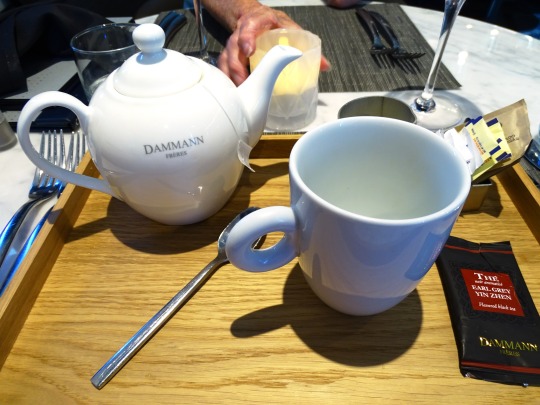
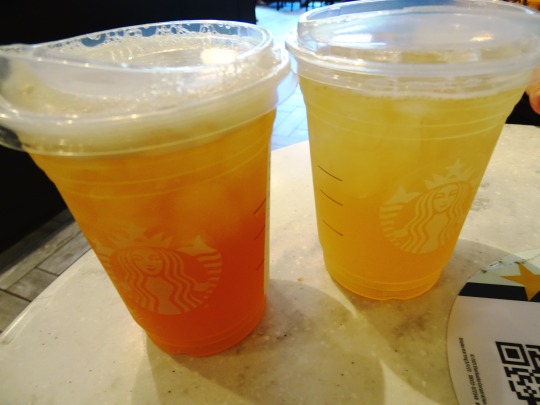
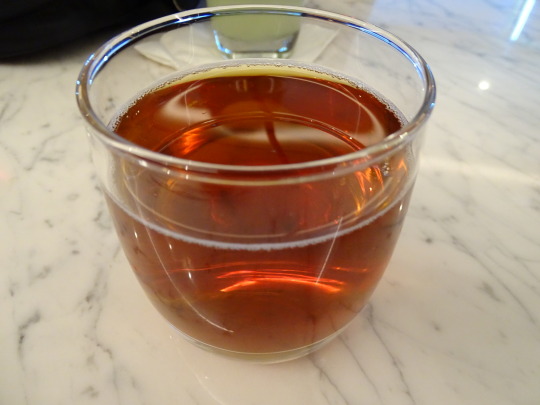






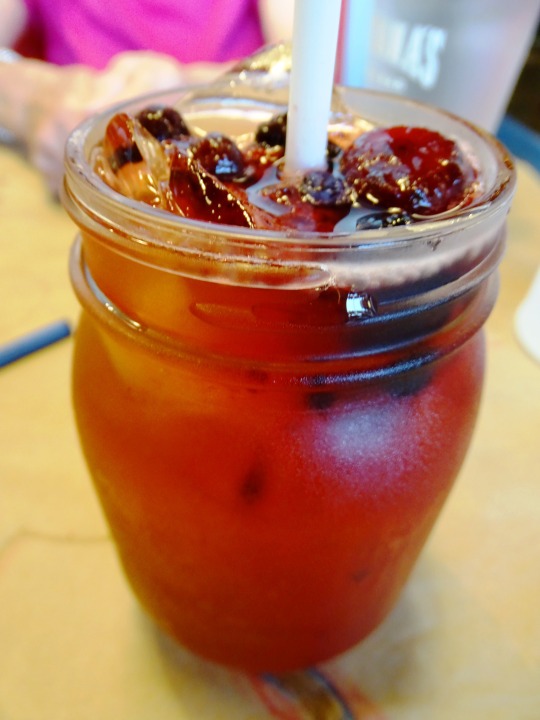

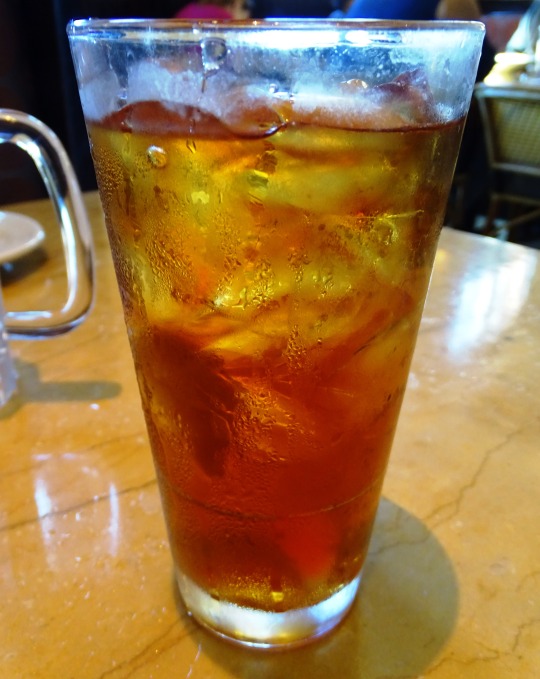
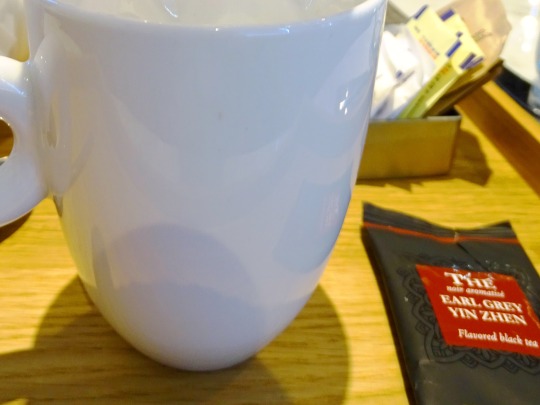
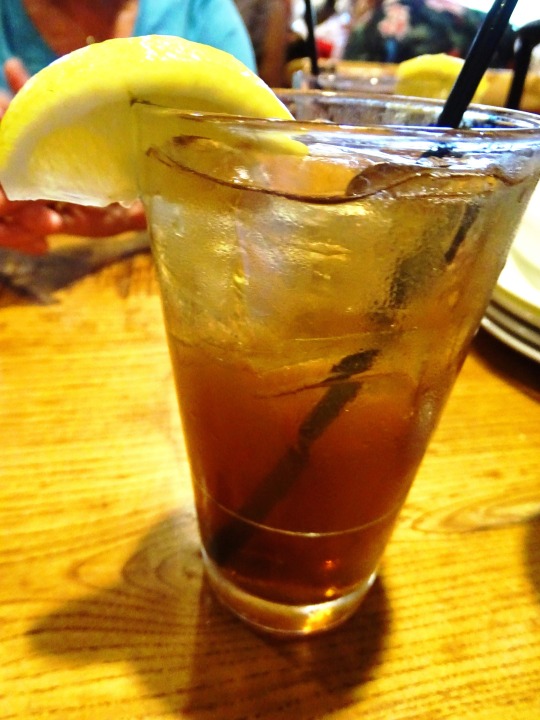
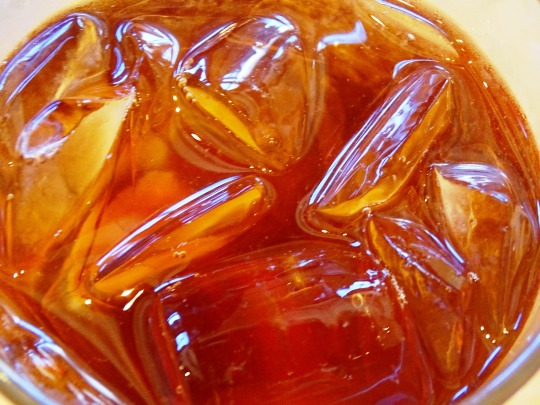
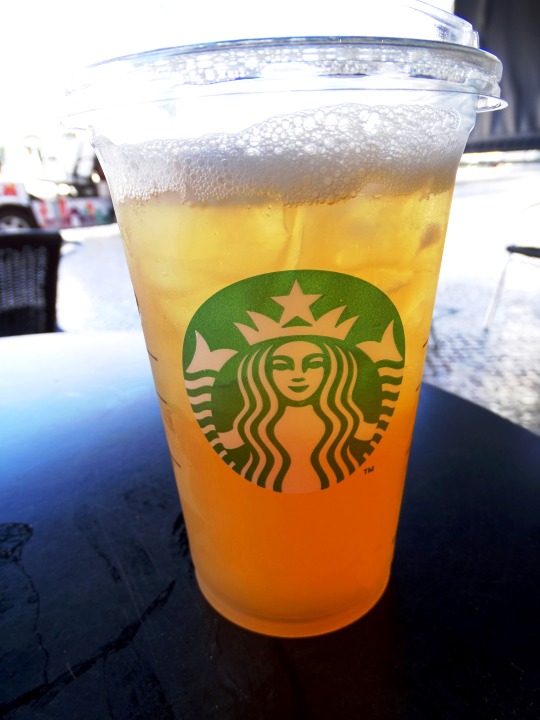
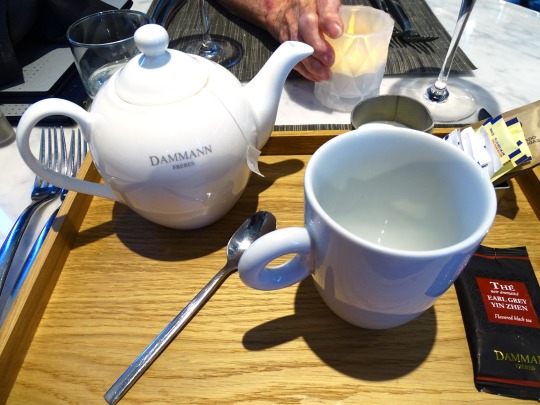

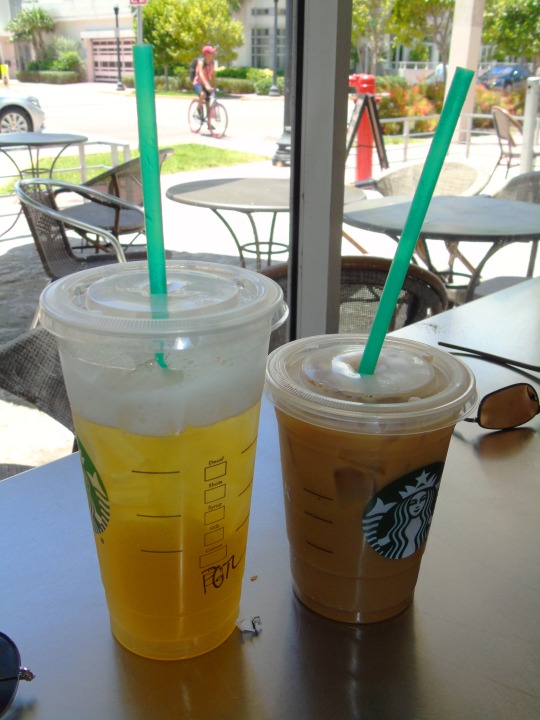




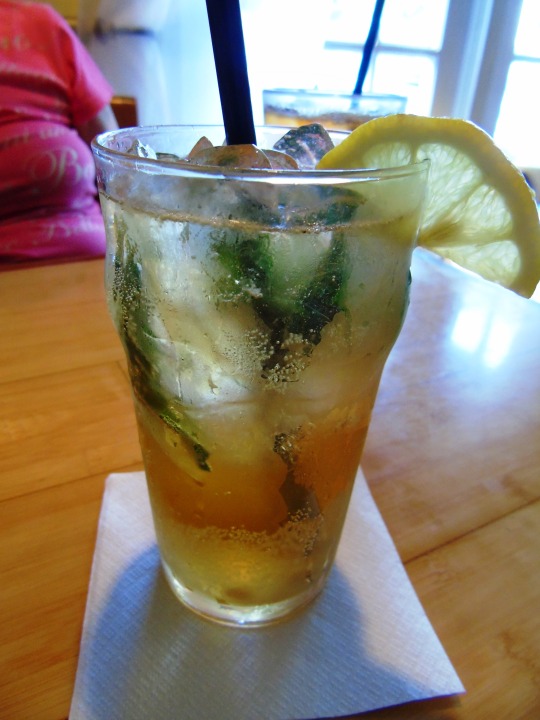


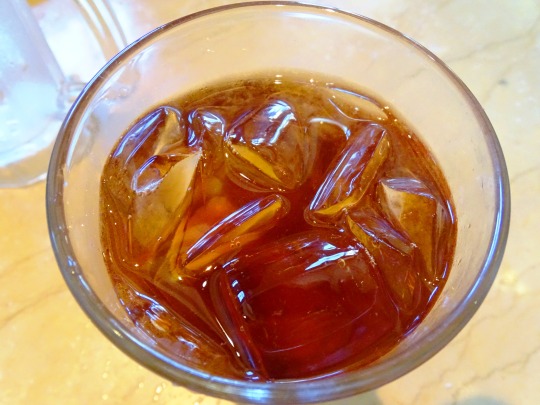

International Tea Day
While everyone loves a cup of tea, many of the workers and producers of that tea face poor conditions and pay. Help raise awareness and keep tea fair.
The tea industry provides millions of people around the world with cups of tea in the morning. One of the biggest producers of tea, India, recognizes the importance of tea in its communities and as a commodity for commerce.
However, much of the working conditions for those within the tea industry still need much improvement. If you think this holiday was about drinking tea, well think again! International Tea Day is all about the tea workers and bringing civil rights into action. Let’s see how this holiday came to pass.
Do you love a good cup of tea? While International Tea Day can certainly involve paying homage to tea, we should pay homage to those working in the tea industry. The best way to do this is by helping to raise awareness regarding their working conditions so they can be improved.
History of International Tea Day
The International Tea Day campaign was launched in 2005 by the trade unions, small tea growers and civil society organizations in Asia and Africa to address the issues of living wages for workers and fair prices for small tea producers.
The International Tea Conference in New Delhi came out with an International Declaration on the rights of workers and small growers to help regulate uneven competition, land ownership, safety regulations, rights of women, social security and living wages. Another organization, The Tea Board of India, proposed International Tea Day in hopes of it becoming an official holiday to the UN Food and Agriculture Organization.
This was proposed by chairman Santosh Kumar Sarangi in 2015. According to the chairman, the proposal of India was supported by countries such as Canada, the United States, European Union, Sri Lanka, China, Japan, Kenya, and Malawi. While the holiday doesn’t have official status, the goal of this holiday is to recognize the vulnerable situations that tea producers in India have with current living conditions and worker-related policies.
The day also focuses on deliberating on urgent issues such as residues, climate change, technology and trends on production and consumption in the tea industry. To observe this day, over 150 representatives from tea organizations gather and conduct a seminar to discuss the pervading problems the tea industry has as well as problems faced within their own country.
International Tea Day Timeline
2737 BC Tea is discovered as a beverage
Legend has it that Chinese Emperor Shen Nung is sitting beneath a tea tree while a servant boiled water for drinking. Some leaves fall into the cup and begin the practice of drinking what is now called “tea”.
1610 Tea comes to Europe
It is believed that the Dutch were the first to bring tea to Europe, just a few years prior to the introduction of coffee by Venetians.
1773 The Boston Tea Party occurs
With the intention of revolting against the high taxes levied by the British government without providing any voice, residents of Massachusetts throw tea into the Boston Harbor. “No taxation without representation” is the major complaint.
2004 International Tea Day is created
At the World Social Forum, International Tea Day is conceived and then celebrated the following years in New Delhi and Sri Lanka, then later in other tea-producing places like Nepal, Viet Nam, Bangladesh and others.
2019 United Nations adopts International Tea Day
After some years of advocating for its observance, International Tea Day is adopted by the United Nations General Assembly at the suggestion of the FAO Intergovernmental Group on Tea.
How to Celebrate International Tea Day
If you’re a lover of tea, then do some research about some of your favorite companies. Try looking up tea brands that support fair trade, and possibly switch to those brands to make a difference in the way you buy products such as tea. Use the hashtag #internationalteaday to help recognize it as an official holiday and educate others about the tea industry if you’re interested.
You could also use International Tea Day to try a variety of tea you have never had before. Matcha, for example, is highly popular as of late. You need to shop with care, though! The first thing you need to take a look at is how the Matcha has been produced and sourced.
You need to ensure that all veins and stalks have been removed so that there is not any bitterness and only the finest leaves should be used. Secondly, the color of the matcha powder is a significant factor. The greener the color is, the better. This is because the leaves are forced to overproduce chlorophyll because Matcha is shade-grown, which causes the vibrant green shade.
If the Matcha is yellow or brown in color, this is a sign that the leaves have not been properly shaded or that branches and stalks have been included. The price is the third factor to consider. Like most things, if you want quality, you can expect to pay a little bit more.
If something seems too good to be true, the chances are that it is. The feel of Matcha is also important. It should be a fine powder that is very silky. Last but not least, the taste is obviously a crucial attribute when it comes to quality. It should have a clean and naturally sweet taste.
Why not make some delicious baked green tea treats on International Tea Day and have a bake sale to raise money and awareness regarding working conditions in the tea industry? Green tea recipes are available in their abundance. People are actively searching for different ways to enjoy green tea. While green tea is delicious when simply mixed with hot water, there is nothing wrong with switching it up from time to time, especially on International Tea Day!
An easy and delicious recipe is Matcha Meringue Kisses. To make this you will need Matcha, sugar, egg whites, and powdered sugar. Begin by sifting together the Matcha and the powder sugar, and then whip the egg whites until they have soft peaks. Gradually add the sugar and whip until stiff peaks. Gently fold the Matcha into this mixture and then transfer to a pastry bag. Pipe the mixture into small kisses onto a baking tray and then bake for around an hour.
Or, why not make Green Tea Donuts? For this, you need green tea, honey, melted butter, milk, egg, salt, baking powder, sugar, and cake flour. You whisk the green tea, salt, baking powder, sugar, and flour. Add the honey, melted butter, milk, and egg, and then whisk. Use a pastry bag to pipe the batter into the mould. Then, simply bake the donuts for eight minutes. You can make your own glaze to go on the top – chocolate goes well!
Other delicious baked treats to try include green tea muffins, brownies and shortbread!
International Tea Day FAQs
What is International Tea Day?
Created to celebrate and pay tribute to the countries that produce tea to supply to the world, starting in India and moving to other places like Sri Lanka, Malawi, Uganda, Bangladesh, Vietnam and more.
When was International Tea Day first celebrated?
International Tea Day first got its start in 2004 when it was celebrated in New Delhi. It grew over the years and by 2019 the day was adopted by the United Nations General Assembly.
How to celebrate International Tea Day?
A great way to observe this day is by learning a bit more about the nations who produce tea for the world. Also, don’t forget to order a cup of fair trade tea for one, or take a friend out to enjoy a cuppa together.
What is the theme of International Tea Day?
The theme for this day devoted to tea producers changes each year, but some of the past themes have included themes such as Tea and Fair Trade or Harnessing Benefits for All from Field to Cup.
When is International Tea Day celebrated?
Taking place on May 21 of each year, International Tea Day originally took place on December 15 from 2005 when it was often only celebrated by tea-producing countries. It changed to May 21 when the UN adopted the day.
Source
#Earl Grey#Earl Grey Tea is my favorite tea#Computer tea Earl Grey hot#USA#I don't like coffee#I only drink tea#original photography#always unsweetened#Lemon Black Tea Lemonade#Tropical Ice Tea#Peach Green Tea#Lavender Ice Tea#Pineapple Black Tea#Strawberry White Tea#Peach Citrus Green Tea#International Tea Day#21 May#InternationalTeaDay#travel#vacation#Capilé#Portugal#Women are Persons By Barbara Patterson#Tea Earl Grey Hot#Spiked Texas Tea#Lemon Black Tea
2 notes
·
View notes
Text

Martin Parr
English, b. 1952
Gold Cup, Nuwara Eliya, Sri Lanka, 2005
Inkjet color print
20 x 30 in
2010.7.2
Museum purchase with funds from Mrs. Martha W. Smith by exchange
Collection of the Haggerty Museum of Art, Marquette University
http://museum.marquette.edu/eMuseumPlus?service=ExternalInterface&module=collection&objectId=6453&viewType=detailView
I picked this piece to talk about rules because, even though I can’t see their faces, I feel like these ladies are judging me.
When I think about rules in fandom, I think about the “right” way to participate: who can join in and who can’t, which characters are ok to ship and which ones aren’t, who to cheer for, who to hate, which songs are best, and which adaptations are the “real canon.”
Fanworks do not need to consider the theme. They only need to be inspired by or responding to one piece of art and anything you are a fan of. I love tea, and this image makes me want to create a tea blend for my favorite comic book character, Gwenpool (I’d submit the recipe and a picture of the tea).
For more information, to see the rest of the inspirational art pieces, and to sign up for show reminders, visit https://epublications.marquette.edu/fandom/Affirmationtransformation/
#fandom#fan event#fanfic#fic#fanart#cosplay#fanvid#fan edit#video games#writing#poetry#call for submissions#dissertation#phd life
2 notes
·
View notes
Text
Get to know you better game! Answer the questions and tag 9 people you want to know better.
tagged by: @baratrongirl
last song I listened to: Technically "The Macarena", because I needed to get my twins to dance for twenty minutes for a school thing and I was getting desperate. =p They were at least awed that I had been alive when the Macarena first came out, and that it was part of my ice skating warm-up routine!
The last song I pulled up of my own volition was "Never Look Away" by Vienna Teng. I absolutely adore her music. Her song "Eric's Song" is still the best song for my spouse and I.
currently reading: So many things! I love reading. I am making my dogged way through the One Piece manga after the live action drove my headfirst into it (I had stayed away for thirty years!). I am almost done with "The Seven Moons of Maali Almaeda", which is brutal but fascinating, featuring a queer photographer in Sri Lanka in the 80s. Or rather featuring his ghost, since he's been brutally murdered by a government death squad. Fascinating and alternates between horrific and nice quiet human moments. And then I am also reading Aliette de Bodard's "The Tea Master and the Detective", for something lighter, featuring Watson as a living ship and Holmes as a traumatized female teacher who likes solving mysteries.
currently watching: Kingohger! I am really really bad about watching anything consistently, but Kingohger is absolutely beautiful sentai. I adore every single one of these kings, and they're fighting an evil God, and they're sowing hope and breaking cycles of generational trauma, and I just want them all to walk away happy despite their trauma. And since it's aimed at children, they probably will; one of the reasons I like kid's TV, I think, while reading some much darker stuff (see above).
currently obsessed with: I never really put down a fandom or an obsession, I just rotate through them. I still adore Ace Attorney and Les Mis. New obsessions include One Piece (criiiies but also Zoro was written for me), Apothecary Diaries, and Dungeon Meshi; we'll see what else snags me over the next little bit!
tagging: Anyone who wants to do it! I am really socially awkward and bad at figuring out who to tag but also I love getting tagged in these things. Thanks for the chance to answer!
3 notes
·
View notes
Text
Places to visit near me
Looking for the best places to visit in Sri Lanka. by the stunning views through Ella train journey overlooking a spectacular gap in the southern mountain wall. Situated in the middle of beautiful Place, with small vegetable Gardens, tea plantations on the hill slopes and forests on the tops this hill station is nothing less than breathtaking. Ella undoubtedly, is one of the most beautiful places to visit in Sri Lanka.







#travel#travelling#travelblog#travelblogger#travellovers#travelgram#traveler#tumblr#besttraveltracking#travel blog
2 notes
·
View notes
Photo

Today is Constance’s birthday, Happy Birthday to the Shady Lady! Last week, it was Ignatz’s birthday but I was pretty busy. I didn’t even have time to take a picture, let alone make and drink the tea.
So today, I’ll do a joint tasting for both teas!
Once again, the Fodlan Tea Collection teas come from Lupicia. Ignatz’s tea is something called the UVA Highlands BOP. Constance’s tea is just the Apple Tea. To be clear, both are black tea. So they have to be brewed like black teas.
Now for the taste, Ignatz’s tea’s Fodlan description on the tea is “A black tea common to the south of Almyra, it is fairly basic in its flavours. This (Seiros Tea) is its common name in Fodlan.”
The UVA Highlands BOP description on Lupicia’s website reads, “ A tea from the most renowned plantation of the Uva region in Sri Lanka (Ceylon). With a clean astringency characteristic of this area, its fragrance is best savoured without milk. “
I can’t smell the tea at all, despite not using any milk. The taste is inline with the descriptions in that it is clean and strong. It has an acidic after taste that I quiet like and is generally bitter on the tongue.
I had lamb shanks for dinner tonight and Ignatz’s tea definitely helped clear my tongue of the greasy lamb after taste. So 7/10, would drink again!
Next up, Constance’s tea!
The Fodlan description of her tea says, “A tea blended with two types of apple peels. Elegant and sweet, it is popular among common folk and nobles alike.”
The Lupicia’s description reads, “ This mild black tea boasts a fresh apple flavour. The rich sweetness is sure to remain on the tip of your tongue!”
Now this is a black tea with fruit pieces and it does have a very strong apple scent. So you drink with your nose before you taste. The taste is sweet but not Turkish dessert tea sweet. It is a fruity sweetness that does linger on your tongue. So no lies detected in the description!
You can taste the apple, although given the strong apple scent, it is likely my brain would taste apple regardless. Regardless, the apple gives a very refreshing aftertaste.
I did drink Ignatz’s tea and Constance’s tea back to back and the pairing was an unexpected hit! As I said, Ignatz’s tea cleared my pallet from my big lamb dinner. So I could enjoy Constance’s sweeter tea and have it like almost a dessert. But even without Ignatz’s tea, Constance’s tea was a good after dinner tea!
10/10 I am definitely buying the Apple Tea from Lupicia!
3 notes
·
View notes
Text
My time has come, the excessive amounts of research I've gone in support of a handful of throwaway lines in fic has paid off ;)
Nettle would be my best suggestion (it's pretty neutral-tasting, there's some indication that might have some anti-inflammatory and/or anti-allergy properties).
For a similar effect - to the calming one chammomile is supposed to have, I mean, not the actual effect it's having on you :D - you're probably looking at like, lavender or lemon balm - I'm pretty sure lavender, at least, would taste pretty bad, though the lemon balm might be OK. Might use less of it, that seems a lot, but I have no real grasp on half the quantity measures here so uhhh play it by ear I guess.
Going out on a limb a little - if you don't have any reason to avoid caffeine, just tea-tea would also be a strong contender.
(I for possibly obvious reasons don't make this quite like this - though fair play to OP the hover-bio is enough to work out that those are going to be US quarts etc and convert them. The bigger problem is that I still haven't grasped what, if anything, US apple cider is equivalent to here. I've been told very firmly that it's not apple juice, and having now drunk a UK non-alcoholic cider (so sweet it was like drinking syrup) that doesn't seem to match what people have said either. What I usually do, much along the same lines, has sage in it for sore throats, but even I accept that that doesn't actually taste good.)
General waffle on cinnamon: Sri Lanka cinnamon (C. verum) is not the same thing as Indonesian cinnamon (C. burmannii) or cassia / Chinese cinnamon (C. cassia / C. aromaticum). They're closely related, they have similar but not identical flavour profiles, but they have certainly been ascribed different medicinal properties. (C. verum is a traditional digestive aid, C. burmannii very likely a stronger blood-thinner than the others, C. cassia - ròuguì; 肉桂 is used in TCM - see https://tcmwiki.com/wiki/rou-gui)
I am told that most cinnamon sold in the US is C. cassia - which, if true, would make that the most likely ingredient here. Usual disclaimer that I'm not a TCM practicioner, but "reinforce fire and strengthen yang, dispel cold and stop pain, warm meridians and collaterals" sounds to me like exactly what you'd want for an autumnal lurgy.
JESUS TEA
So it’s Flu Season again, and this recipe for Tea To Fix What Ails You was given to me by a Christian friend, and I’ve taken to calling it JESUS TEA due to it’s miraculous properties. Even though it, technically, contains no tea. This tea is as caffinie-free as anything processed in a US plant can get, but be sure to check the provenance and all ingredients in case of allergies.
You will Need:
A Bigass Pot, becuase this is something you make in large quantities
working stovetop
those lil cloth sachets you use for wassail/empty teabags/those lil reuseable loose-leaf tea steepers.
Recipe:
about a quart of water
1 cup apple cider
about half a lemon’s worth of juice
a shitwhack of honey- try to get as local as possible and generally the less-processed the better if you want to build a resistance to local allergens. If you have allergy concerns or don’t like the taste of honey, go ahead and use more processed stuff/another sweetener instead.
three tablespoons/three bags chamomile tea
three tablespoons/three bags rooibos tea
teaspoon crushed cloves
1 cinnamon stick (more if you like it spicier)
¼ tsp nutmeg
1/8 tsp cayenne or white pepper
Bring water to a simmer in the pot. Add the chamomile, rooibos and spices to steep about 4-5 minutes or longer if you like tea-flavored tar which given you have the flu you probably do. Add Cider, Lemon Juice and Honey until dissolved. Drink all of this in the course of an hour to stay hydrated, make more pots as needed or until you pass out.
FOR MAXIMUM EFFECTIVENESS: gargle warm salt water first for as long as you can, it’ll break up the mucus in your throat and soothe the soreness.
48K notes
·
View notes
Text

There’s something magical about the scent of cinnamon. It instantly transports you to a place of warmth and comfort—maybe it’s a memory of freshly baked cinnamon rolls, a steaming cup of spiced tea on a chilly evening, or the soft glow of a candle flickering in the background.
Cinnamon isn’t just a spice—it’s a feeling. And when it comes to gifting, what better way to spread that cozy, comforting vibe than with beautifully crafted, cinnamon-scented treats?
But not all cinnamon is created equal. If you want the best, Ceylon Cinnamon—also known as “true cinnamon”—is the gold standard. Harvested in Sri Lanka, it has a delicate sweetness and a rich aroma that sets it apart from the more common Cassia variety. Plus, when you choose organic cinnamon, you’re getting the purest form of this incredible spice—free from additives and full of natural goodness.
So, if you're looking for unique and thoughtful gifts, here are some cinnamon-infused ideas that will make anyone’s day a little cozier.
Thoughtful Cinnamon-Inspired Gifts
1. A Cozy Cinnamon Tea Set
There’s nothing quite like curling up with a warm cup of tea, especially when it’s infused with Ceylon Cinnamon. Gift a beautifully packaged tea set featuring organic cinnamon-infused blends—like cinnamon chai or spiced green tea. You can even add a jar of raw honey and a handcrafted mug for the ultimate tea-lover’s gift.
2. Cinnamon-Infused Honey – A Sweet Delight
Imagine drizzling cinnamon-infused honey over warm toast, stirring it into a cup of milk, or adding it to a bowl of oatmeal. This simple but luxurious treat is packed with both flavor and health benefits, making it a thoughtful gift for foodies and wellness lovers alike.
3. Hand-Poured Cinnamon Candles
A cinnamon-scented candle can transform any space into a cozy retreat. Whether it's for a relaxing evening, a work-from-home setup, or just to add warmth to a room, the soft glow and inviting aroma of an all-natural, cinnamon-infused candle make for a perfect gift.
4. DIY Cinnamon Sugar Scrub – Spa at Home
If you love DIY gifts, a homemade cinnamon sugar scrub is a fun and thoughtful idea. Mix organic cinnamon with brown sugar, coconut oil, and a hint of vanilla for a natural exfoliating scrub that leaves skin feeling soft and refreshed. Package it in a cute jar, and you’ve got a spa-like gift straight from the heart.
5. Ceylon Cinnamon Essential Oil for Relaxation
For the friend who loves self-care, a small bottle of pure Ceylon Cinnamon essential oil can be a game-changer. A few drops in a diffuser fill a room with warmth and comfort, while a diluted blend can be used for a relaxing massage.
6. A Baking Kit for the Sweet Tooth
Know someone who loves baking? Put together a cozy baking kit with organic cinnamon powder, vanilla extract, high-quality flour, and a cute recipe card for homemade cinnamon rolls or snickerdoodle cookies. It’s a fun and interactive way to enjoy the scent and taste of cinnamon.
7. Scented Cinnamon Potpourri Bags
Fill small cloth sachets with cinnamon sticks, dried orange peels, and cloves for a lovely handmade gift. These potpourri bags can be placed in drawers, closets, or even cars to bring a natural, comforting fragrance wherever they go.
Where to Find the Best Ceylon Cinnamon
If you're looking for the finest cinnamon-based gifts, make sure you’re getting authentic Ceylon Cinnamon from a trusted source. Many organic spice shops specialize in high-quality, ethically sourced cinnamon, and you can easily buy organic spices online to ensure you’re getting the real deal.
0 notes